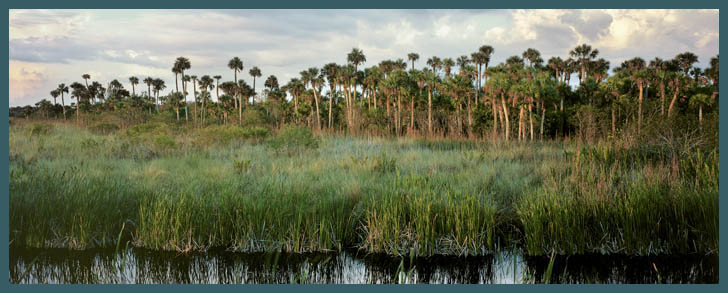Water is an essential part of life. "It makes up most of the volume of every living cell, maintains the temperature of the climate, and reshapes mountains and land"(Robertson, 2014, p.94). Every living organism on earth needs it in some form to survive. Water is also needed for the production of food, electricity, and the creation of products for everyday survival. In Florida, we have two naturally occurring bodies of water, Lake Okeechobee and the Florida Everglades. "Lake Okeechobee pours into the Everglades from the north and west. They overflow southward into the Everglades, from Lake Okeechobee, Kissimmee River, and dozens of other creeks and streams"(Stoneman Douglas, 2011, p.112). This overflow of water is what is keeping our Everglades alive.
https://www.florida-everglades.com/flash-marco3.jpg
Water from Lake Okeechobee, and surrounding water sources, have always overflowed to the Everglades in south Florida. This is no longer happening how it used to, due to sugar cane farming, and the growing demand to build more houses in south Florida. To build more houses, we are leveling and adding dirt to natural watersheds that are needed to move water from the north to the south. Lake Okeechobee is having new dikes built to limit the water released to the south, and to protect surrounding communities from possible floods. Instead of sending the water south, we are sending it out to the east coast through Indian River, and the west through the Caloosahatchee. This water from the lake is polluted with pesticides from farms all over Florida, and have high levels of phosphorus. This phosphorus led to the algae blooms throughout the Treasure Coast a two years ago. This led to the death of our local river, and is ruining the beach.
https://static1.squarespace.com/static/5759f9fab6aa609d8e0bca27/t/58e7927dbf629ae56be23739/1491571343482/Florida+Keys+Fishing+Guides+Make+a+Statement%21?format=750w
When the water was sent south to the Everglades, the naturally occurring phosphorus, was taken out of the water. The Everglades are able to purify the water. If we sent the water south, the Everglades would be able to take out the phosphorus, and produce clean, unpolluted water. This clean water would help save our dying Everglades. The clean water will also enter the water cycle, and will be taken all over the world. By taking out the pollutants, the Everglades are trying to save the plant from becoming totally polluted. If we do not send the water south, we will be killing the Everglades, which house many species that are native to Florida. Each play a role in the surrounding ecosystems, and keep other populations in balance. We need gators, fish, birds, deer, etc. to all work together to help keep the Everglades working. But to do so, they need clean water to survive.
https://d3n8a8pro7vhmx.cloudfront.net/bullsugar/pages/106/attachments/original/1469208014/logo-bullsugar.png?1469208014
"Water is being used faster than it can be purified and replaced. The most visible problem is water scarcity. Less visible, but more long-term, are the resulting symptoms of water scarcity: water pollution, underground aquifer depletion, and damage to ecosystems"(Robertson, 2014, p.95). The Earth only has so much fresh water available for our use, and we do not try and help in the purification process. In Florida, we are building on top of our aquifers, which does not let naturally flowing water purify, and go into these aquifers. If we do not allow water to do so, we will be out of water, and desperately looking for new ways to clean water quickly.
Works Cited
Stoneman Douglas, M. (2011). Excerpt from The Everglades: River of Grass. In University Colloquium: A Sustainable Future (pp.104-107 & pp.111-112). Acton, MA: XanEdu Publishing



No comments:
Post a Comment